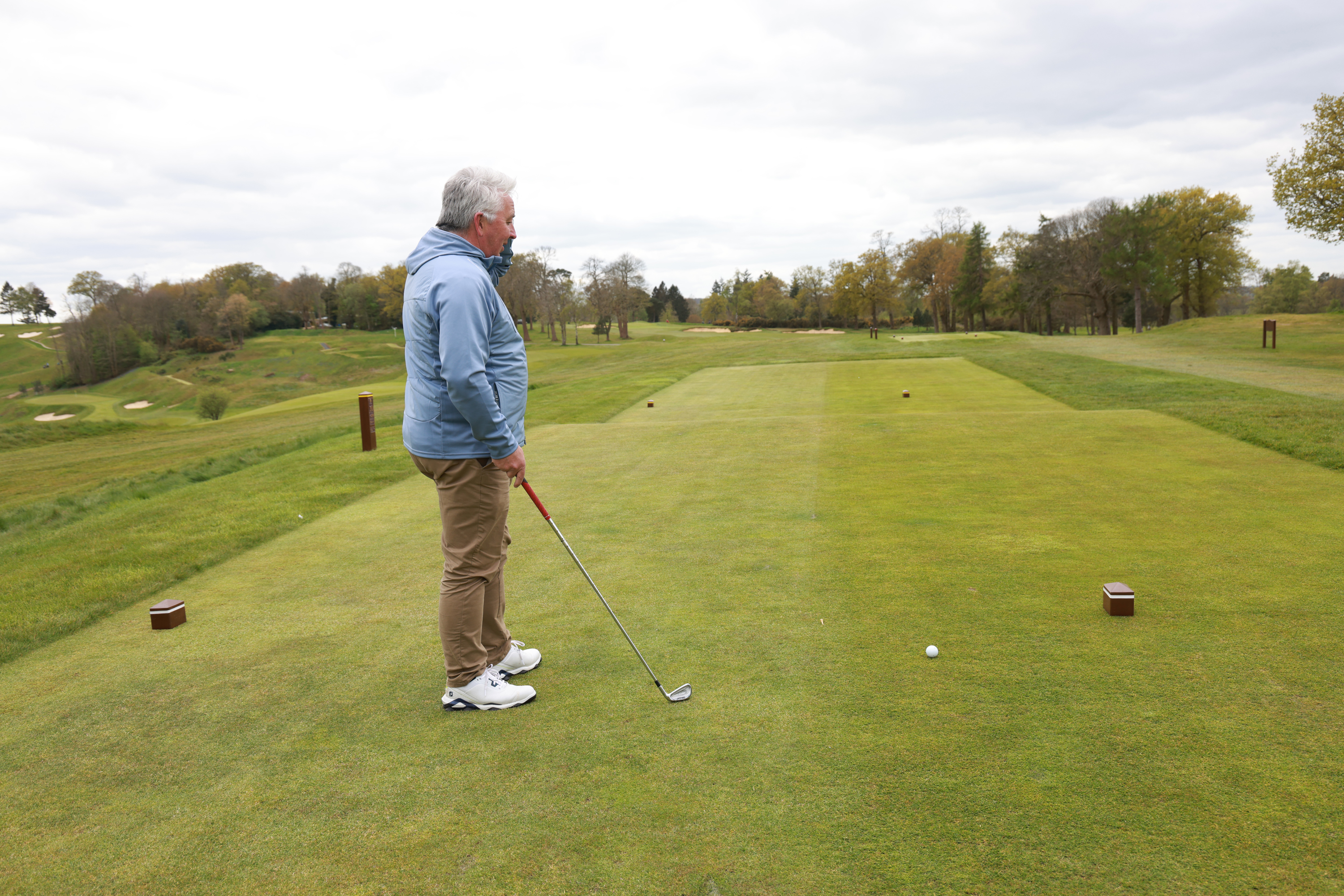Is It Mandatory To Tee Up Your Ball When You’re Between The Markers?
When you’re in the teeing area, do you need to peg it up or can you just drop a ball on the ground? Can you change the surface of the teeing area?


It makes sense to tee up a ball if you have the opportunity. Most of us find it easier to hit a ball from a peg than to hit one lying on the ground. When players are starting out in golf, instructors will often begin by getting them to hit the top of a tee peg before asking them to attempt to hit a ball – Harvey Penick was known for getting beginners started that way.
Elite players may choose to tee the ball low if they’re trying to play a punchy shot to stay under the wind, or get some run. But could they go one step further and simply drop the ball on the ground when they’re between the markers?
The answer is yes. If you’re playing from the teeing area, you may either play the ball from a tee or from the ground. That’s Rule 6.2b(2).
The teeing area is two club lengths back from the front outside of the tee marker. If you drop your ball in that area, you can play it as it lies. Or you can put it on a tee, which for most of us would be the sensible thing to do.
You can alter the surface of the ground in the teeing area before you put your ball down. Dame Laura Davies is famous for hitting her driver into the tee to raise the ground slightly before smacking a low, piercing shot away from the raised section of ground created.
You can also put a pile of sand on the tee, as players from bygone generations would have done, and place your ball on that. In fact, any other natural material can be placed on the ground and the ball “teed” up on it.
In the teeing area, unlike in the general area, you can bend or break grass and weeds that are attached to the ground. You can also remove or press down soil, and remove dew, frost and water.
Subscribe to the Golf Monthly newsletter to stay up to date with all the latest tour news, equipment news, reviews, head-to-heads and buyer’s guides from our team of experienced experts.

What do I do now?
An important Rule to note that could help you out is Rule 6.2b(6). When a ball in play is in the teeing area. Say, for instance, you’ve topped your ball off the tee and it’s just moved a couple of inches, you have the option to tee the ball up again. You can also play it as it lies or move it somewhere else in the teeing area and play it from the ground.
In short – the answer to the question “Is it mandatory to tee up your ball when you’re between the markers?” Is… No.

Fergus is Golf Monthly's resident expert on the history of the game and has written extensively on that subject. He has also worked with Golf Monthly to produce a podcast series. Called 18 Majors: The Golf History Show it offers new and in-depth perspectives on some of the most important moments in golf's long history. You can find all the details about it here.
He is a golf obsessive and 1-handicapper. Growing up in the North East of Scotland, golf runs through his veins and his passion for the sport was bolstered during his time at St Andrews university studying history. He went on to earn a post graduate diploma from the London School of Journalism. Fergus has worked for Golf Monthly since 2004 and has written two books on the game; "Great Golf Debates" together with Jezz Ellwood of Golf Monthly and the history section of "The Ultimate Golf Book" together with Neil Tappin , also of Golf Monthly.
Fergus once shanked a ball from just over Granny Clark's Wynd on the 18th of the Old Course that struck the St Andrews Golf Club and rebounded into the Valley of Sin, from where he saved par. Who says there's no golfing god?
You must confirm your public display name before commenting
Please logout and then login again, you will then be prompted to enter your display name.